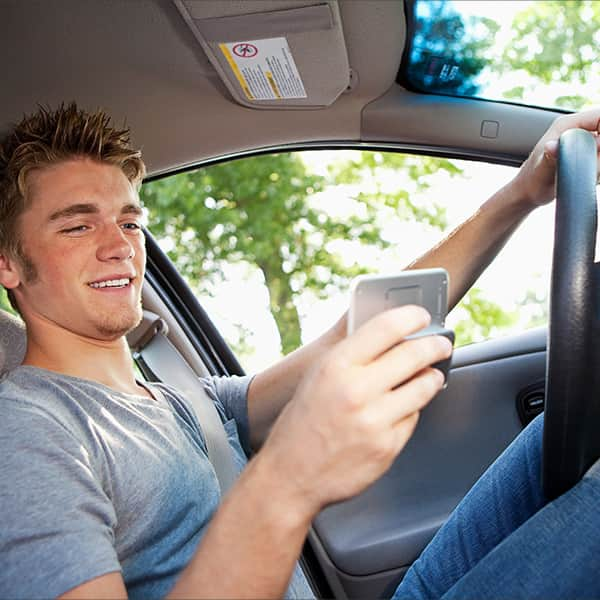Can Simulation Booths Help Prevent Teen Texting While Driving?

By now, most teenagers in American have been warned repeatedly about the dangers of texting and driving. Yet sometimes the risk doesn't feel all that real when you're out on the road on your own. Some high schools around the country have established distracted driving programs to reinforce how real the risk is for young drivers who are new to the road.
The Towson High School Example
In Maryland, Towson High School rallied support from the local SADD chapter and obtained a grant from State Farm Insurance to bring a distracted driving simulation booth into the school for students to try.
"It was easy until I got to the texting part," one of the students commented.
High school students were gathered at a morning assembly to listen to a speaker, watch a video, try the simulation exercise, and then engage in discussion sessions throughout the day. The assembly showed tragic scenes from distracted driving accidents, testimonials from accident survivors, and stories from families left behind. Hundreds of highs school juniors and seniors participated in the event.
The Problem with Technology
Technology has its time and place, but that certainly is not in your hand while behind the wheel. Too frequently, both experienced and inexperienced drivers trivialize their actions and convince themselves that one little text isn't going to hurt anyone.
"Our children lack the judgment that comes with experience and a program like this does a good job of making the experience real for them," said Assistant Principal John Stevens. "Thirty years ago, you had problems with driving and alcohol. Today's technology brings new problems."
The Science Behind Driving Simulation Booths
Driving simulation booths are commonly equipped with a driver's seat and steering wheel that face a large, realistic screen. Advanced computer generated software simulates various road conditions, obstacles, situations, and types of weather. Participants encounter trees, buildings, wildlife and traffic, just as they would behind the wheel of their own real cars.
The Ultimate Takeaway
While reading a text message in the simulation booth, most of the juniors and seniors at Towson lasted less than three minutes before getting into an accident or making a dangerous maneuver. Some of them crossed a highway line or ran a red light, while others actually hit a virtual pedestrian or smashed into another vehicle on the road.
The students found the presentations and the simulation to be incredibly moving and a much-needed reinforcement about the dangers of texting and driving. It all seems like common sense, but in a quick insignificant moment, logic and safety are often forgotten. If more high schools can organize programs like the one at Towson High School, who knows how many more young lives can be saved?

